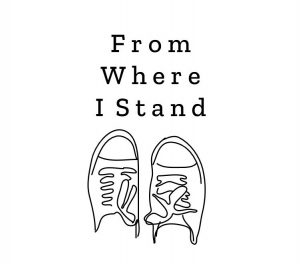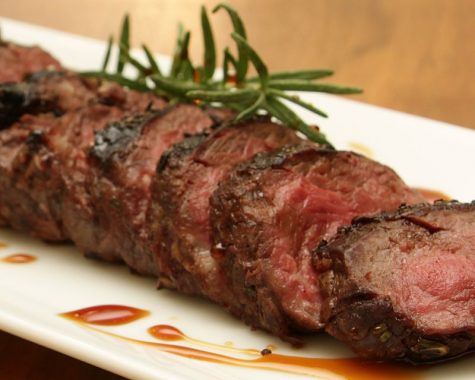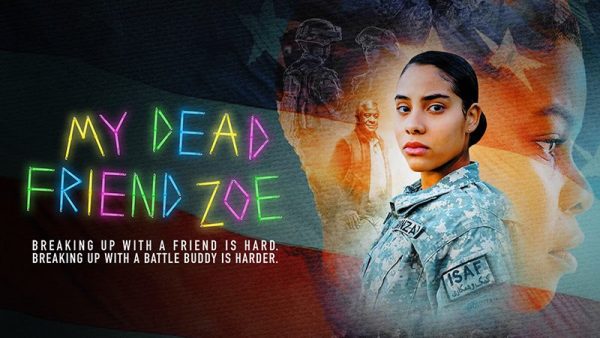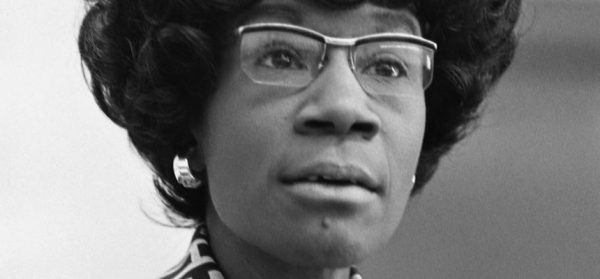How appropriate is cultural appropriation?
Cultural appropriation has been a contested topic for decades, continuing as a debate in modern culture because of its many forms and definitions. The phenomenon is commonly understood to be the unacknowledged or inappropriate adoption of the customs, practices, and ideas of one people or society by members of another and typically more dominant people or society. By this definition, there are small, harmless forms of cultural appropriation such as using an Italian espresso machine or taking a yoga class, as well as harmful forms like the use of blackface to mock people of color in minstrel shows. The latter form is where controversy arises- when members of a dominant culture appropriate marginalized cultures, often failing to truly represent those cultures by simply exploiting their customs.
 But what exactly is inherently wrong with cultural appropriation? How does it fail or succeed to represent a culture? Where do we draw the line? Furthermore, appropriation is defined as the action of taking something for one’s own use, typically without the owner’s permission. But who owns a culture? Cultural appropriation is often accused of taking advantage of cultural stereotypes and thus misrepresenting a culture, but isn’t the defense of those stereotypes perpetuating the generalization and misrepresentation of that culture in and of itself? These questions have led our modern society to debate and explore what a culture is, what it means to be a part of one, and how that culture may be expressed and represented.
But what exactly is inherently wrong with cultural appropriation? How does it fail or succeed to represent a culture? Where do we draw the line? Furthermore, appropriation is defined as the action of taking something for one’s own use, typically without the owner’s permission. But who owns a culture? Cultural appropriation is often accused of taking advantage of cultural stereotypes and thus misrepresenting a culture, but isn’t the defense of those stereotypes perpetuating the generalization and misrepresentation of that culture in and of itself? These questions have led our modern society to debate and explore what a culture is, what it means to be a part of one, and how that culture may be expressed and represented.
Before tackling cultural appropriation, we must first define culture. Part of the reason the debate around appropriation is so multifaceted is that each new offense adds a layer to what culture is. While blackface is the literal adoption of another race’s skin color, a turban is associated with the traditional clothing of Muslim and Sikh religious groups, and dreadlocks are largely a source of national identity for Jamaicans. Many cultures tied to religion, national pride, and race hold a rich history, informing and inspiring many civil rights and equality movements to benefit the members of that culture.
The question thus arises as to when a person can be considered to have become part of a culture. A friend of mine from California is an eighth Cherokee, though has no strong connections to his Cherokee relatives. Is he entitled to practice Cherokee customs? My brother spent four years becoming a shaman in Peru, eventually building a small business in the form of a retreat there – is he negatively appropriating Peruvian spiritual traditions? And what of adopted children or those of mixed race; must they choose between cultures or are they less a part of one for being a part of another? Culture should be defined by oneself, evaluating one’s relationship to a culture and determining whether it is an aspect of themselves they are attached to and wish to express. The subsequent problem with that philosophy arises in the form of the member of a culture taking offense.
Many accused of cultural appropriation are found offensive due to their adopting parts of another culture without explicitly recognizing and appreciating the history and significance of that culture, either verbally or on social media. This is generally in the context of celebrities wearing fashion elements of or adopting artistic styles from different cultures, failing to recognize their power as public figures to influence public opinion about that culture. This becomes problematic when appropriation leads to an increase in profit for the appropriator and a decrease in profit for the member of the cultural group.
Writer Feminista Jones is quoted in a CNN article, “Cultural appropriation is about the power dynamic,” continuing on that it becomes an issue when powerful and privileged people “validate” the customs of marginalized people. The example often provided is that of black hairstyles such as cornrows, a traditionally black style of hair referred to as ‘ghetto’ on black individuals and ‘high fashion’ on white. Another classic instance of misrepresentation and generalization employed is using the euphemism ‘urban’ to describe black hairstyles instead of simply calling them black. “If you’re going to take on something that does have sacred and historic significance and an unequal history of power dynamics it’s important to honor that history,” writer Jamia Wilson wrote in the same article. “Be an ally by knowing your stuff and being respectful and acknowledging where it comes from.”
While these are good guiding words, at the end of the day, a culturally informed white woman donning cornrows celebrating black culture and an ignorant white woman donning cornrows are still both wearing cornrows. Neither are representative of true black culture as neither are black, and the outside observer at a passing glance has no indication that the wearer is meaning to be offensive, is simply ignorant, or is a proud ally. I believe one should always be given the benefit of the doubt in terms of innocence of intention. Furthermore, if the passerby is offended, they should seek to understand the appropriator because engaging in a conversation about a stigma-riddled topic instead of pointing fingers is a more productive way to resolve the issue.
But what is it exactly that is so offensive to people about adopting elements of someone else’s culture? In a video for her history class, young actress Amandla Stenberg explains that white artists claiming hip hop and white women wearing box braids are only wrong in the vast context of black oppression in America. She explains that black hairstyles are designed to maintain the neatness of black hair while hip hop was derived from a long history of African American music originating from songs sung as a mechanism of survival under slavery, dated back even farther to roots in native African tribal songs. Stenberg further points out that this same history makes it difficult for black people to appropriate white culture in a balanced way, because too often women straighten their hair and men are forced to cut off their dreads to maintain their jobs and avoid discrimination in the workplace; it becomes a matter of assimilation. She concludes with the question, “What if America loved black people as much as they loved black culture?” Stenberg highlights issues that arise surrounding black culture on black faces which still exist today – in fact, a recent law was passed in February, 2019 in New York City banning dismissals from jobs based on hairstyle. However, while Stenberg maintains a reasonable argument against cultural appropriation, she, as well as others with her belief, tie everything to race, thus misrepresenting the people within her culture.
Yo Zushi of the New Statesman elaborates on this notion: “At a time of heightened racial tensions across the world, with police shootings of black men in the United States and Islamophobia seemingly on the rise, this rage against cultural appropriation is understandable: no right-minded liberal wants to cause unnecessary offence, least of all to minorities. Yet simply to point out instances of appropriation in the assumption that the process is by its nature corrosive seems to me a counterproductive, even reactionary pursuit; it serves no end but to essentialize race as the ultimate component of human identity.” Creating monopolies on elements of style, art, and ideas avoids offending a minority group but succeeds in greater sectionalism and segregation. “[Members of minority groups] believe that reparations must be paid for the whitewashing of their ethnic groups throughout history. Yet taken to their logical conclusion, their arguments propose enforcing a new kind of racial or cultural purity.” In attempting to create a more diverse, educated, and representative public, harsh adherence to cultural appropriation achieves just the opposite.
Moreover, this concept of ownership of a culture conveys a false understanding of what a culture itself stands for. “Many of those calling out cultural appropriation of all kinds… seem to share this proprietorial attitude, which insists that culture, by its nature a communally forged and ever-changing project, should belong to specific peoples and not to all.” Zushi describes how appropriation includes taking intellectual and traditional property or expression from another culture without permission, continuing, “Yet such a definition seems to assume the existence of mythical central organizations with absolute mandates to represent minority groups – a black HQ, an Asian bureau, a Jewish head office – from which permissions and authorizations can be sought.” The Business of Fashion points out that, “in a multi-connected world everything is visible and anyone might — justly — seek to reclaim his or her property.” Cultures are fluid and able to be exchanged in a way that this current political climate has rendered too taboo to discuss, causing unnecessary and counterproductive reactions to cultural appropriation.
In a video on whether white people should be allowed to wear dreadlocks, YouTuber Kris McDred explains how dreadlocks are specific to certain nations and tribes within Africa and even then only allowed for male warriors of a certain age. In that context, McDred himself was appropriating his own tribe’s culture as he was not a warrior and still wore dreads. He continued by arguing that excluding members of other cultures from his own was regressive, as the black community is accused of assimilating into white culture and then repels those who take an interest in their own. Representation of elements of a culture, even if not fully representative without members of the culture present, is still a form of representation.
Restrictions upon what can and can’t be created hinder the power of art and design to harbor cultural exchange, engagement, and multiculturalism. “Should an artist or author be prohibited from painting certain subjects because of her background, and what happens to the fluidity of culture if artists are fenced-in by their identities and ethnicities?” asked Jenni Avins of The Atlantic. Avins finds the notion that she must stay within the confines of the cultural lane she was born into “outrageous.” “No matter how much I love cable-knit sweaters and Gruyere cheese, I don’t want to live in a world where the only cultural inspiration I’m entitled to comes from my roots in Ireland, Switzerland, and Eastern Europe.”
“We have to stop guarding cultures and subcultures in efforts to preserve them. It’s naïve, paternalistic, and counterproductive,” said Avins later in the article. “Plus, it’s just not how culture or creativity work. The exchange of ideas, styles, and traditions is one of the tenets and joys of a modern, multicultural society.” A famously controversial instance of cultural appropriation occurred last year as Gucci featured a series of white runway models donning turbans. Shock spread across the fashion industry and many spoke out against the use of a symbol of Muslim and Sikh culture in such a superficial manner. The Business of Fashion ran an article in defense of the show, stating, “Fashion, as form, commerce, logic and industry, is a modern, Western creation based on a take-and-use, or take-and-abuse logic, that now needs to squeeze itself into a global postmodern state of mind, which is far less fixed and much more fluid, and yet strictly supervised.”
The very foundation of fashion is riffing on foreign styles and representing and sharing them with the world through popular brands. As I worked backstage for a local children’s production of The Lion King, a colleague asked if we were culturally appropriating traditional African cultures by decorating the actors’ faces with designs echoing tribal face paint. I replied that we might be, but the end product was to celebrate and share a story to a culture that may be ignorant of it. At the end of the day, as long as the appropriation is not purposefully harmful, representation of any sort is preferable to no representation at all.
Many proposed a solution in protesting the Gucci run – they argued the issue would have been resolved if the models used had been of Muslim or Sikh origin. Designer Jane Kellock said to BBC, “Design is a mish-mash of different styles, cultures, ideas – and that’s what makes it interesting.” She continued: “sometimes it’s good to reference the original context in some way and often that’s use of models.” Appropriation is no substitute for diversity, and too often advertising and design companies are attacked for appropriation when they easily could have hired native models and avoided the pushback and achieved true representation. However, too often companies use famous faces they know will sell instead of native models, highlighting less the racist undertones of the company but of their consumers.
“We are still living in a world where white people and institutions are much more powerful than black and brown people and their institutions.” However, the solution to this is not to prevent Beyonce from dressing as an Indian woman in a music video or a little white girl from dressing up as Mulan for Halloween, but engaging with cultures on a more than aesthetic level. In an interview with Nicki Minaj in New York Times Magazine, she stated, “Come on, you can’t want the good without the bad. If you want to enjoy our culture and our lifestyle, bond with us, dance with us, have fun with us, twerk with us, rap with us, then you should also want to know what affects us, what is bothering us, what we feel is unfair to us. You shouldn’t not want to know that.” Furthermore, there must be an effort to support a more complete representation, focusing on ceasing to otherize and supporting Asian artists instead of shaming Katy Perry for pretending to be a geisha in a music video. Culture can carry societies towards each other but people must make the difference and bridge the gap.
A final component of the discussion on cultural appropriation is whether marginalized groups feel under attack in watching others adopt elements of their culture. Last May, as Utah high schooler Keziah Daum posted pictures from her prom where she was featured in a qipao traditional Chinese gown, a debate was sparked over whether she was sharing Chinese culture or had stolen it. Daum went out of her way to respond to the overwhelming response she received by expressing her appreciation of and respect for Chinese culture, asserting that she meant no harm and wore the gown because she found it beautiful. A Twitter user responded to the post with, “I’m proud of my culture, including the extreme barriers marginalized people within that culture have had to overcome those obstacles. For it to simply be subject to American consumerism and cater to a white audience is parallel to colonial ideology.”
However, when responses to the dress by Chinese Twitter users were totaled and polled, it revealed the majority didn’t care, or regarded Daum’s choice in gown as a compliment. An article from January 30 of The Week asks, “Are we, Westerners, liberal Westerners, too over-sensitive of the feelings of others brought on by white guilt? Or are we right to call out what we think is wrong when we see it? Should we wait before speaking, to see what the actual people affected think? Or is it our duty to step in first?” In the same article, it quotes a Japanese social media site with “‘Culture is meant to be stolen. If it’s not worth stealing, then it isn’t culture,’ ‘If people keep claiming ‘cultural appropriation’ then people will not touch our culture. Then, people will not understand our culture and it will be easier to become our enemy,’ and ‘Westerners care too much about silly things.’”
Ultimately, if no one owns the rights to a culture, membership must be self-identified. As a result, whoever is offended by an instance of appropriation must evaluate why they feel offended and be understanding of the person responsible for the offense. Not to diminish the negative effects of appropriation – especially in the context of celebrities, there is tremendous power to influence public understanding of a culture, and if that culture is misrepresented, stereotypes and misunderstanding between cultures proliferates. Yet alternatively, focusing on supporting correct representations of cultures does just the opposite, beneficially spreading awareness about a culture. We must broaden our empathy instead of adhering to tribalistic impulses. Regardless of origin, the more a culture is represented, the more it can be accepted.
It’s fair to say that cultural appropriation is inevitable, but we must banish the idea that appropriating elements from one another’s cultures is in itself problematic. People should step carefully when dressing themselves and appreciating art not to claim that culture for themselves, but borrowing in and of itself is not a bad thing. Culture is fluid, culture evolves, and it should travel both ways. Modern global society is exposed to all kinds of cultures, which should be celebrated for it is in this context that great art is created and representation is championed. Elvis is blamed for having stolen rock ‘n’ roll from rhythm and blues, but it wasn’t as if the record labels who hired him hadn’t attempted success with black artists; it was the society which chose the white man appropriating culture to be successful. Furthermore, blues and rhythm themselves were the combination of traditional African songs combined with the appropriation of European instruments.
Cultural appropriation in the form of fusion can yield enormous benefits for cultural groups as well – although Justin Bieber could be accused of appropriating Puerto Rican culture as he was featured in the hit single “Despacito,” it resulted in massive profit for the artist, Luis Fonsi, and popularized Puerto Rican pop music, integrating it into American mainstream culture. Nearly every meal and language is the byproduct of centuries of cultural combination and appropriation; one can go so far as to appropriate elements of a gender one associates with. In an increasingly racially, ethnically, and religiously mixed global community, let us give cultures the freedom of movement from which all creative evolution is born.
Violet Massie-Vereker is a senior at Pelham Memorial High School. Her experience in journalism includes writing for the News of Pelham for the past two...














Thomas F Imperato • Jun 19, 2019 at 7:48 am
Great does not adequately describe your article. It is well written, well thought out and thought provoking!
Well done!